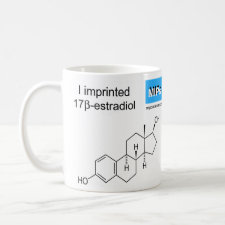
Authors: Zhu QJ, Wang LP, Wu SF, Joseph W, Gu XH, Tang J
Article Title: Selectivity of molecularly imprinted solid phase extraction for sterol compounds.
Publication date: 2009
Journal: Food Chemistry
Volume: 113
Issue: (2)
Page numbers: 608-615.
DOI: 10.1016/j.foodchem.2008.07.044
Alternative URL: http://www.sciencedirect.com/science/article/B6T6R-4T2S8WH-C/2/bf3033489135b0349e18e93366e8aef9
Abstract: MIPs (molecularly imprinted polymers) for 17β-estradiol were prepared using 2-(trifluoromethyl) acrylic acid (TFMAA) as functional monomer and trimethylolpropane trimethacrylate (TRIM) as cross-linker by precipitation polymerisation. Data from HPLC system were calculated, and separation properties of several MIPs were reported. MISPEs (molecularly imprinted solid phase extractions) were performed with MIPs as sorbent, and absorption properties of the MISPEs prepared by UV irradiation initiating polymerisation at a ratio of 1/4 (17β-estradiol/TFMAA) for 17α-estradiol, 17β-estradiol, 4-androstene-3, 17-dione and progesterone investigated by detecting filtrates at each stage of sampling, washing and elution. Elution trials proved that addition acid or alkali reagents might affect retention of the MISPE and CSPE (control/no molecularly imprinted solid phase extraction) for 17β-estradiol. A competition test implicates that the MISPE has the strongest specific retention and enrichment for progesterone. In the actual experiment for 17β-estradiol with extracting solution of milk powder as samples, the MISPE showed better selectivity and enrichment property than C18 and CSPE, and the recovery on the MISPE was up to 85.5%
Template and target information: 17β-estradiol, estradiol
Author keywords: molecular imprinted polymers, 17β-estradiol, Solid phased extraction, Milk powder, GC, MS, precipitation polymerisation, HPLC



Join the Society for Molecular Imprinting

New items RSS feed
Sign-up for e-mail updates:
Choose between receiving an occasional newsletter or more frequent e-mail alerts.
Click here to go to the sign-up page.
Is your name elemental or peptidic? Enter your name and find out by clicking either of the buttons below!
Other products you may like:
 MIPdatabase
MIPdatabase









